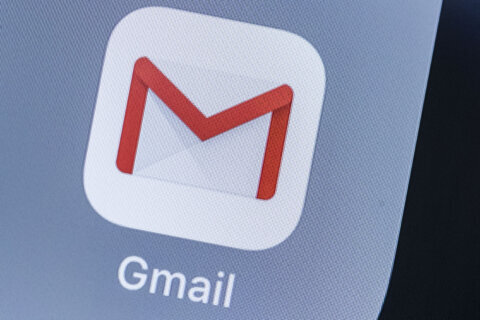Q: My new credit card just arrived and has the wireless symbol on it, so should I get an RFID blocking wallet now?
A: The move to include “contactless payment technology” on major credit cards has been growing in the U.S., but lots of countries around the world have been using it for quite some time.
To see if your card has the option, look for the four curved sideways lines that look like a radio wave on the front or back of your card.
Older generation RFID (radio frequency identification) technology was introduced over 10 years ago in the U.S., but some of the shortcomings of the technology kept it from widespread adoption.
Much of what you hear about from today’s companies that offer RFID blocking wallets, purses, backpacks and even pants and shirts is designed to protect against problems with this older technology.
New tech: EMV and NFC
The EMV (Europay, MasterCard, Visa) chip-based standard that made transactions much more secure — combined with a secure process for exchanging payment information wirelessly (near field communication, or NFC) — has bolstered the return of the option to U.S.-based credit cards.
NFC is also the technology widely used in mobile payment systems on your smartphone from a variety of companies.
The EMV standard changed the type of information that was transmitted to a merchant as it uses a one-time use token for each transaction, which is what gets transmitted wirelessly when you tap your contactless credit card on a payment terminal.
RFID skimming
The fear that’s being spread by RFID protection products is that a thief can easily skim your credit card info simply by being near you with an RFID reader.
The problem with this approach to stealing credit card information is that it’s simply useless information, because it’s not enough for the thieves to do anything with. It doesn’t include your name, billing address or even the critical three-digit code on the back of your card.
There are lots of videos online that show how credit card information can be gathered wirelessly, but the reality is that it’s just not something that’s being done in real life because it’s not a practical way to steal credit card information.
Most security experts will point to the fact that not a single incident has ever been reported where RFID fraud was involved even though hundreds of millions of cards are in circulation.
Cheap stolen credit cards
Stolen credit card info is so readily available from hackers, that they are selling it for as little as $1 per card or less in bulk. Anyone interested in acquiring lots of credit card numbers isn’t going to bother trolling around in the real world and risk being recorded on a surveillance camera when they can safely buy as many of them as they want on the “Dark Web.”
You’re already covered
Even if someone was able to trick your card into paying for something wirelessly, your credit card company won’t stick you with the bill. You’re infinitely more likely to be compromised in a number of other ways.
The bottom line
The technology being used for contactless credit card transactions is completely safe and super convenient, so don’t be afraid to use it.
Those companies selling RFID blocking products are trying to convince you that they have a solution to a problem that actually doesn’t exist, so save your money.
Ken Colburn is founder and CEO of Data Doctors Computer Services. Ask any tech question on Facebook or Twitter.







